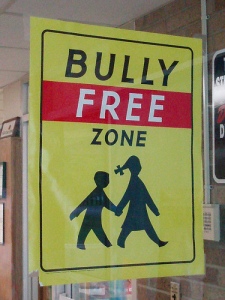 The recent and ongoing disaster in Japan once again brings up the question– just how do helping professionals assist children after an acute traumatic event like an earthquake or tsunami? Here are some recommendations:
The recent and ongoing disaster in Japan once again brings up the question– just how do helping professionals assist children after an acute traumatic event like an earthquake or tsunami? Here are some recommendations:
Establish and maintain close relationships with trusted adults. Even under the most adverse circumstances, most children and adolescents can cope as long as they have connections to adults, including helping professionals and caregivers. Young people who have someone they know is concerned about their well-being, provides them with guidance, structure and information, and spends frequent time with them do better than those who do not have such relationships. While parents are usually the source of support, others (counselors, teachers, childcare staff) can also supply a sense of meaningful connection.
Insure a sense of safety. All children need to feel safe, but particularly those under stress. In acute trauma situations like disasters, sharing knowledge of what is being done to help everyone be safe and secure is important. Many individuals have a tendency to worry more than usual after a catastrophe or negative event; for example, some children believed that airplanes could hit their homes after the events of September 11, 2001. Helping professionals and caregivers can assist them by providing age-appropriate and realistic information to reduce undue fright, anxiety or obsessive thinking. Monitoring children’s exposure to violent images or reports of death or disaster will also reduce feelings of vulnerability and the sense that “it is happening again” when, in fact, there may no longer be a threat.
Practice self-regulation techniques. Knowing a method or two to relieve emotional and physical tension can enhance and build resilience over time. Play is a natural form of self-regulation if it calms and relieves the individual. Talking, drawing, making music or physical activities or sports can help, too. For children and adolescents who are anxious or showing signs of hyperarousal, many of the more well-known self-regulation activities and strategies (breathing, mindfulness, and muscle relaxation) are useful; mastery of a “resilience-building” skill also is positive resilience factor, in and of itself.
Encourage optimism. Traumatic events like disasters make it difficult to feel positive about the world; even children and adolescents who have a natural tendency to see a positive future can be emotionally shaken by certain events. Those individuals who believe that these events are temporary will do better than those who obsessively belief that things will not change for the better. It is extremely important that helping professionals and parents help children and adolescents develop a sense that they can effectively deal with stress.
Identify values and beliefs. Commonly used lists of resilience factors include several concepts that underscore the importance of values and beliefs in trauma informed practice. Individuals who are altruistic, for example, and seek to help others in need build personal resilience and reduce depression and anxiety in the process. Values that involve connection to others are particularly important because they reinforce connection to a larger group and emphasize the welfare of others. After a traumatic event, beliefs about religion or spirituality are also a source of resilience for some individuals; trauma informed practitioners can help identify these beliefs within a framework of cultural sensitivity for individuals’ and families’ preferences for sharing information on religious or other practices.
Practice all of the above. This list of recommendations began with the importance of relationships in resilience-building after a traumatic event, underscoring that one of the most significant factors in resilience and trauma recovery is a meaningful relationship with either a parent or a helping professional. In order to make that possible, parents and professionals must be able to be available and supportive. Practitioners must make sure that they are feeling safe, calm, well-rested, and in good emotional health in order to implement the resilience-building strategies in this list. Practitioners can also help parents/caregivers understand and practice these same principles so that they can be available and supportive to their children.
Finally, it is important to look for any trauma reactions even months after exposure to an acute event; it is common for individuals of any age to begin experiencing symptoms 2 to 3 months after the occurrence. Anxiety, depression, avoidance of certain situations, problems with cognition and concentration and irritability can signal that some resilience-enhancement is in order. If reactions persist, professional assessment may be appropriate to make sure children and adolescents retain the ability to function at home, school, and with peer groups.
Be well,
Cathy Malchiodi, PhD, LPCC, LPAT
Follow TLC’s Twitter at http://twitter.com/TLCchildtrauma
Become a Fan of the National Institute for Trauma and Loss in Children– join our Facebook Fan Page today!





